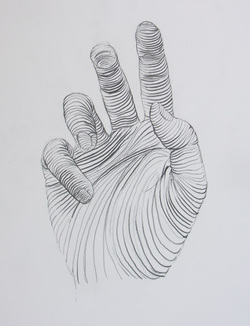

They can get pretty big, but are way more convenient than hauling around folders full of separate images.ĭid I mention you can get it for free? The developer allows you to pay whatever amount you want for it. When I'm done, I'll save out a '.pur' file, which embeds all the images. When starting on a project, I'll often open it up and start dragging reference images off the internet onto the board. If needed, you can also add little text notes. You can move them around freely, have them automatically arranged, zoom in/out and even scale/flip/rotate images as you please. It's used for collecting reference and compiling them into a moodboard.
#EASY CONTOUR DRAWING EXAMPLES SOFTWARE#
PureRef is a fantastic piece of software that is both Windows and Mac compatible. This is another one of those things that aren't sold through Amazon, so I don't get a commission on it - but it's just too good to leave out.


If you're interested, here is a full list. It's also more than that - it's a hand-picked recommendation of something I've used myself. Most of the links here are part of Amazon's affiliate program (unless otherwise stated), which helps support this website. The recommendation below is an advertisement. Otherwise, draw it using the ghosting method - plan it out, take your time, and execute it with confidence. If it isn't going to be contributing much, or if that task can be done better with a different mark (or is already being accomplished by another), don't draw it. So before you draw a contour line as part of a construction - or really, before you draw any line - think about what it is meant to accomplish as part of your drawing. When using them in actual drawings, I frequently see students draw far too many without any real consideration of what each individual one is meant to accomplish. In this exercise it's not really an issue because we're simply practicing their use. One important thing to keep in mind however is that you don't want to get in the habit of simply dropping a bunch of contour lines on something for no reason. They'll also help us to reinforce the illusion that they're solid and three dimensional. Contour lines themselves are something we're going to use a great deal throughout our later lessons, as it'll help us to better understand how these forms that we're drawing exist in 3D space, and how they relate to one another.


 0 kommentar(er)
0 kommentar(er)
